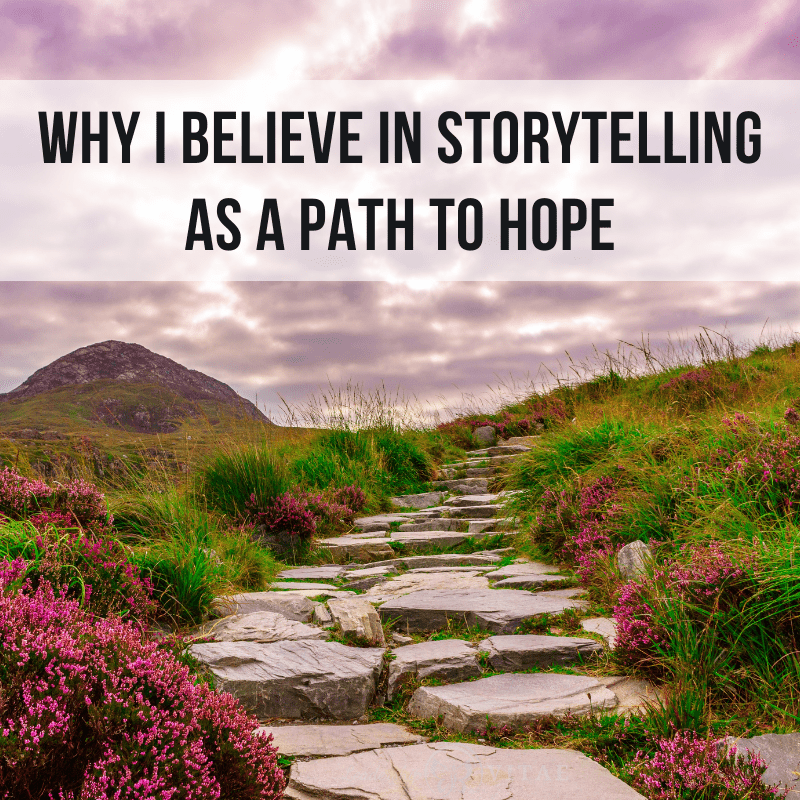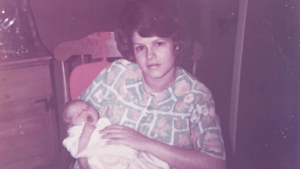
A traditional coach is not a storyteller. There have been times on my journey when I’ve wondered if coaching is for me. I’ve been pursuing my International Coaching Federation (ICF) certification for the last few years with the intention of eventually becoming a full-time coach. Yet I’m uncertain and filled with doubt.
I love helping people unlock their potential. Figure out limiting beliefs that are holding them back. I’m also a big believer in lifelong learning and toolkit building. I don’t think any one set of tools has all the answers. Instead, we are always learning more about the brain, neuroplasticity, and our ability to shape outcomes through the power of the mind.
Storytelling is not coaching. In the strictest sense of the profession, the center is the client, not the coach. As a storyteller AND coach, I’ve worried that there’s no place for me in the profession. At least as far as certification goes.
And then I coach. Go out into the real world, with real people. I remember why I do this work. Why storytelling matters and will always have a place in helping people.
The importance of stories
At the end of a recent coaching session, we were closing out the conversation. I was asking my client whether she would be willing to be recorded as part of my certification final exam. We went over a few minutes of the difference between the sessions we’ve been having and the need for me to do a condensed “pure coaching” session.
I shared a few of my concerns about finishing the program. Should I have? Maybe not, but we’ve known each other professionally for years and a key element of our executive coaching sessions is an advisory role. My experience is one of the reasons she hired me.
She contacted me afterwards and thanked me. “This is why I hired you. You share willingly of your own doubts and challenges. The way you think about them and move through them gives me hope that I can do the same with my own.”
We are a meaning-making species. Take in data points and create stories about ourselves and others. We create opportunities and obstacles – some real and some imagined – based on our upbringing, experience, and perceptions.
When someone else shares a story that resonates with us, it can challenge the default narratives we create.
Too often, we see someone that is where we want to be and consider all the reasons we can’t get there. When they are vulnerable enough to share their struggles and doubts with us, it gives us hope. We see that they are moving forward through similar bumps and setbacks we experience. That we have common internal narratives that threaten to hold us back. In those stories, we can see ourselves moving forward too.
Space for storytelling
Blended coaching (coaching plus advisory, mentoring, etc) isn’t the only space with room for storytelling.
At a prior role, I was asked to participate in a microaggressions panel. The audience was a large group of men, attending to better understand the daily challenges women can face in the workplace.
During the session, my fellow panelists and I were very vulnerable about our experiences. The subtle and not-so-subtle behaviors and treatment we had received.
At one point, a gentleman who had worked with me previously spoke up. He was shocked by what I had shared – that I don’t always feel safe at work. He assumed his experience was THE experience. That someone “like me” didn’t feel safe shook how he saw the environment and challenged him to look with new eyes. To ask questions and commit to creating a safe space for others.
When we share our stories, it helps others with similar experiences feel less alone. It also teaches all of us that experiences vary. That there is always more under the surface than we may realize. Encourages the whole of us to show up, increasing awareness of our diverse lived experience.
Leaders as storytellers
Another space where I’ve found storytelling to be key is leadership. As leaders, people see where we are, but may not know how we got here. When they look at themselves, and then where we are, the path to leadership may seem murky or unattainable.
Sharing mistakes and missteps, struggles and small wins that kept us going can lessen the mystique around leadership. There is no one way to get there, as there is no one way to be a leader.
Storytelling makes us real. Leaders are human, just like anyone else. Unfortunately, leadership can also be very isolating and lonely as responsibilities increase and leaders are increasingly seen as “other” from the teams they lead.
Our humanity can be seen through our stories. Whether it’s about the craziness of getting kids out the door on a Monday morning, or a forgotten item – these are common experiences that remind others we are far from perfect. That perfection isn’t a prerequisite to leadership…far from it.
Leadership is about leaning into our humanity and taking on responsibility for supporting others through the chaos that can be our work life. How can we do that if we are out of touch with our own struggles and hide them? We trust who we know and stories help those around us KNOW us.
Storytelling is the path to hope
As humans, struggle is the journey. There will be challenges we face and doubts that arise. There will also be moments of triumph and confidence and joy. We are each living our own story every moment of every day, and each is a chance to start a new paragraph or chapter towards a new ending.
When we share our stories, we give someone else the ability to see how they may rewrite their ending or start a new chapter. We create allies in someone that didn’t know such books existed. Create community in shared experiences and awareness in diverse ones.
These all create hope.
I may struggle to keep myself separate from my clients and team. From sharing stories that I think might give them insight or open them to possibilities about a path forward. If someone needs a light in a dark space, I’m unwilling to play Marco Polo. Instead, I can lend a hand, an ear, and maybe a story that helps them build a map forward.
Whether we are a leader, peer, or friend, we can be that light in the darkness for others. To bring hope through storytelling to help others feel seen and understood. To help each other through the struggle which is to be human.









2 Responses
About: “He was shocked by what I had shared – that I don’t always feel safe at work. He assumed his experience was THE experience. That someone “like me” didn’t feel safe shook how he saw the environment and challenged him to look with new eyes. To ask questions and commit to creating a safe space for others.” How did you handle this? It could enlightenung or threatening.
Thank you for your question Mary Ann. I was appreciative that he was open to the idea we do not all experience the same environment the same way. He was in a forum specifically designed around allyship, so it felt as though it was a safe place to openly discuss our experiences with folks that were unlikely to face the same challenges. We had clear guardrails coming into the session to do what we could to ensure safety on both sides of the conversation. Does that address your question? I’m happy to connect as well.